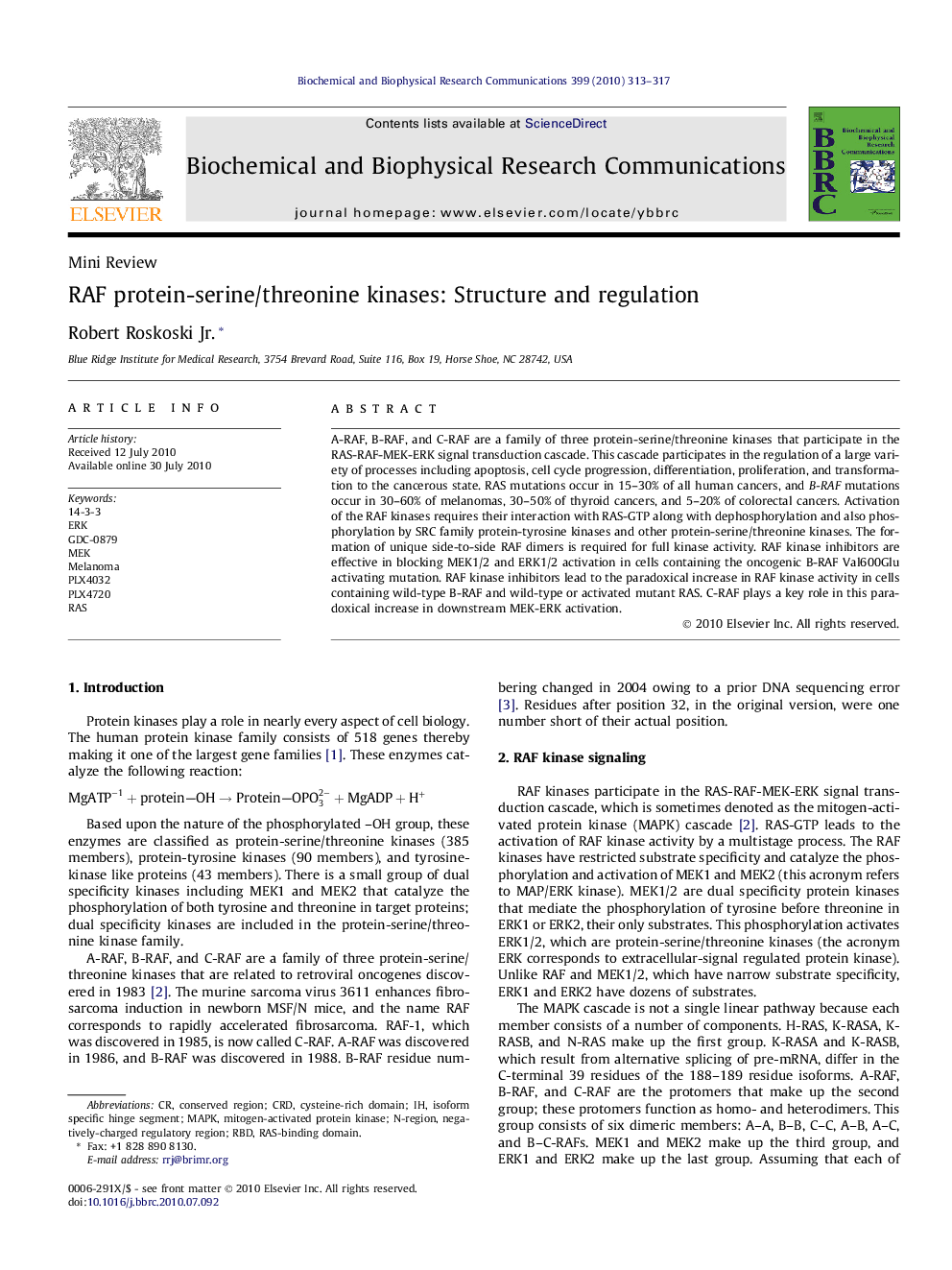| کد مقاله | کد نشریه | سال انتشار | مقاله انگلیسی | نسخه تمام متن |
|---|---|---|---|---|
| 1931597 | 1050558 | 2010 | 5 صفحه PDF | دانلود رایگان |

A-RAF, B-RAF, and C-RAF are a family of three protein-serine/threonine kinases that participate in the RAS-RAF-MEK-ERK signal transduction cascade. This cascade participates in the regulation of a large variety of processes including apoptosis, cell cycle progression, differentiation, proliferation, and transformation to the cancerous state. RAS mutations occur in 15–30% of all human cancers, and B-RAF mutations occur in 30–60% of melanomas, 30–50% of thyroid cancers, and 5–20% of colorectal cancers. Activation of the RAF kinases requires their interaction with RAS-GTP along with dephosphorylation and also phosphorylation by SRC family protein-tyrosine kinases and other protein-serine/threonine kinases. The formation of unique side-to-side RAF dimers is required for full kinase activity. RAF kinase inhibitors are effective in blocking MEK1/2 and ERK1/2 activation in cells containing the oncogenic B-RAF Val600Glu activating mutation. RAF kinase inhibitors lead to the paradoxical increase in RAF kinase activity in cells containing wild-type B-RAF and wild-type or activated mutant RAS. C-RAF plays a key role in this paradoxical increase in downstream MEK-ERK activation.
Research highlights
► The formation of unique side-to-side RAF dimers is required for full kinase activity.
► RAF kinase inhibitors block MEK activation in cells containing oncogenic B-RAF.
► RAF kinase inhibitors can lead to the paradoxical increase in RAF kinase activity.
Journal: Biochemical and Biophysical Research Communications - Volume 399, Issue 3, 27 August 2010, Pages 313–317